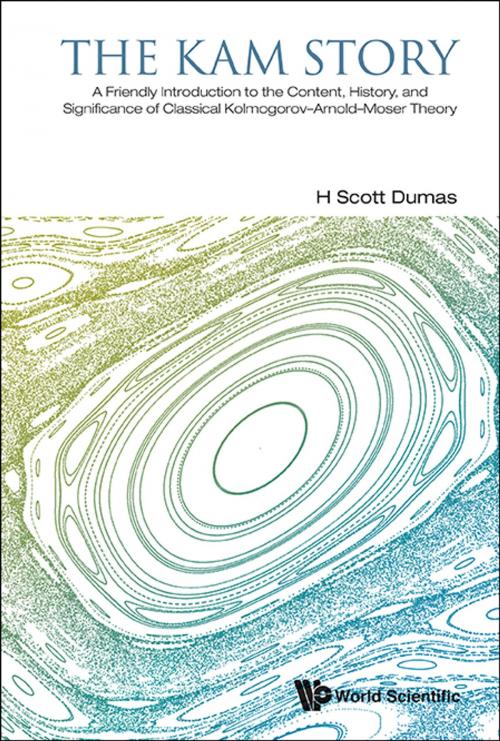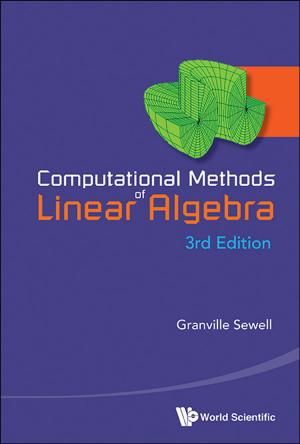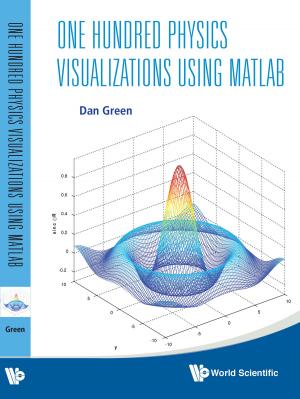The KAM Story
A Friendly Introduction to the Content, History, and Significance of Classical KolmogorovArnoldMoser Theory
Nonfiction, Science & Nature, Mathematics, Linear Programming, Science, Physics, Mathematical Physics| Author: | H Scott Dumas | ISBN: | 9789814556606 |
| Publisher: | World Scientific Publishing Company | Publication: | February 28, 2014 |
| Imprint: | WSPC | Language: | English |
| Author: | H Scott Dumas |
| ISBN: | 9789814556606 |
| Publisher: | World Scientific Publishing Company |
| Publication: | February 28, 2014 |
| Imprint: | WSPC |
| Language: | English |
This is a semi-popular mathematics book aimed at a broad readership of mathematically literate scientists, especially mathematicians and physicists who are not experts in classical mechanics or KAM theory, and scientific-minded readers. Parts of the book should also appeal to less mathematically trained readers with an interest in the history or philosophy of science.
The scope of the book is broad: it not only describes KAM theory in some detail, but also presents its historical context (thus showing why it was a “breakthrough”). Also discussed are applications of KAM theory (especially to celestial mechanics and statistical mechanics) and the parts of mathematics and physics in which KAM theory resides (dynamical systems, classical mechanics, and Hamiltonian perturbation theory).
Although a number of sources on KAM theory are now available for experts, this book attempts to fill a long-standing gap at a more descriptive level. It stands out very clearly from existing publications on KAM theory because it leads the reader through an accessible account of the theory and places it in its proper context in mathematics, physics, and the history of science.
Contents:
-
Introduction
-
Minimum Mathematical Background
-
Leading Up to KAM: A Sketch of the History
-
KAM Theory
-
KAM in Context: Questions, Consequences, Significance
-
Other Results in Hamiltonian Perturbation Theory (HPT)
-
Physical Applications
-
Appendices:
- Kolmogorov's 1954 Paper
- Overview of Low-Dimensional Small Divisor Problems
- East Meets West — Russians, Europeans, Americans
- Guide to Further Reading
- Selected Quotations
- Glossary
Readership: Undergraduates, graduates, and researchers broadly interested in Hamiltonian perturbation theory, statistical mechanics, ergodic theory, Nekhoroshev theory, Arnold diffusion, nonlinear dynamics, dynamical systems, chaos theory, classical mechanics, and the history of these subjects.
Key Features:
- It is accessible. Several preliminary reviewers have described the text as “very readable” for a mathematics book
- It is unusual. The book combines elements of mathematics, physics, history, biography, etc. in a way that makes it unlike most other mathematics books
- It has extensive supplementary material. The book has a long bibliography, a reader's guide, several appendices, and a long glossary. A few reviewers have commented that some readers might acquire the book for the glossary alone
This is a semi-popular mathematics book aimed at a broad readership of mathematically literate scientists, especially mathematicians and physicists who are not experts in classical mechanics or KAM theory, and scientific-minded readers. Parts of the book should also appeal to less mathematically trained readers with an interest in the history or philosophy of science.
The scope of the book is broad: it not only describes KAM theory in some detail, but also presents its historical context (thus showing why it was a “breakthrough”). Also discussed are applications of KAM theory (especially to celestial mechanics and statistical mechanics) and the parts of mathematics and physics in which KAM theory resides (dynamical systems, classical mechanics, and Hamiltonian perturbation theory).
Although a number of sources on KAM theory are now available for experts, this book attempts to fill a long-standing gap at a more descriptive level. It stands out very clearly from existing publications on KAM theory because it leads the reader through an accessible account of the theory and places it in its proper context in mathematics, physics, and the history of science.
Contents:
-
Introduction
-
Minimum Mathematical Background
-
Leading Up to KAM: A Sketch of the History
-
KAM Theory
-
KAM in Context: Questions, Consequences, Significance
-
Other Results in Hamiltonian Perturbation Theory (HPT)
-
Physical Applications
-
Appendices:
- Kolmogorov's 1954 Paper
- Overview of Low-Dimensional Small Divisor Problems
- East Meets West — Russians, Europeans, Americans
- Guide to Further Reading
- Selected Quotations
- Glossary
Readership: Undergraduates, graduates, and researchers broadly interested in Hamiltonian perturbation theory, statistical mechanics, ergodic theory, Nekhoroshev theory, Arnold diffusion, nonlinear dynamics, dynamical systems, chaos theory, classical mechanics, and the history of these subjects.
Key Features:
- It is accessible. Several preliminary reviewers have described the text as “very readable” for a mathematics book
- It is unusual. The book combines elements of mathematics, physics, history, biography, etc. in a way that makes it unlike most other mathematics books
- It has extensive supplementary material. The book has a long bibliography, a reader's guide, several appendices, and a long glossary. A few reviewers have commented that some readers might acquire the book for the glossary alone















